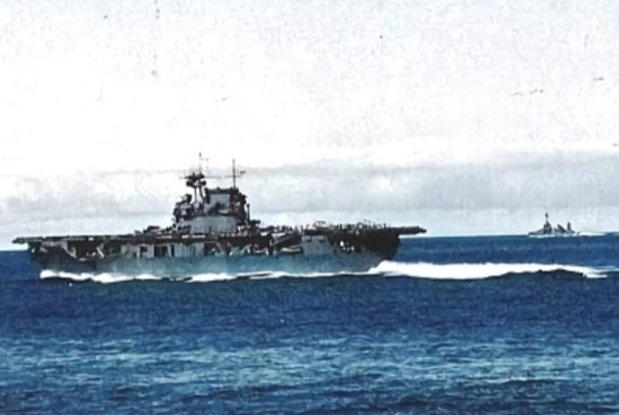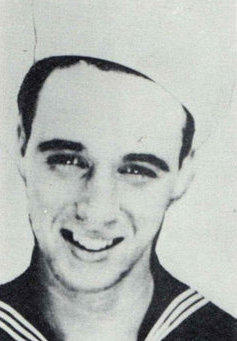
copyright © Wartime Heritage Association
Website hosting courtesy of Register.com - a web.com company
Wartime Heritage
ASSOCIATION

Remembering World War II
Alexander Hugh Gillis

Name:
Alexander Hugh Gillis
Rank:
Machinist’s Mate, 2nd Class
Service Number:
2017652
Service:
USS Northhampton, US Navy
Awards:
Purple Heart
Date of Birth:
1921
Place of Birth:
Glendale, Inverness Co., Cape Breton, NS
Date of Enlistment:
1940
Place of Enlistment:
Boston, Massachusetts
Marital Status:
Single
Date of Death:
December 1, 1943
Age:
22
Cemetery:
Manila National Cemetery and Memorial, Manila, Philippines
Grave:
Walls of the Missing
Alexander Hugh Gillis was the son of John Alexander Gillis (1896-1963) and Jesse Margaret (McLennan)
Gillis (1901-1995). His father was born in Glendale, Inverness Co., Cape Breton, NS; his mother – in River
Denys, also in Inverness. Alexander had nine siblings. Alexander’s sister Florence Anne Gillis (1928-2011)
married William Harrison White (1925-1961) who also served in the US Navy in WWII as a Torpedoman’s
Mate, 2nd Class in the US Naval Reserve (Service No. 8022927).
Alex immigrated with his family to the United States at the age of five or six.
He was received for service aboard the USS Northhampton from USNTS Newport, Rhode Island (United
States Naval Training Station), for duty on December 7, 1940.
The USS Northampton was laid down April 12, 1928, at the Bethlehem Steel Fore River Shipyard at
Quincy, Massachusetts. The Northampton-class ships were initially classified as light cruisers
because of their light armor, according to the terms of the Washington Naval Treaty of 1922.
Northampton was named for the Massachusetts home town of then President Calvin Coolidge and by
the time of the ship's launching on September 5, 1929, the now former-first lady Grace Coolidge
acted as sponsor. Northampton was commissioned May 17, 1930, Captain Walter N. Vernou
commanding.
On December 7, 1941, Northampton was at sea as part of the USS Enterprise task group, returning
to Pearl Harbor the day after the Japanese attack. When Enterprise sailed 2 days later in search of
the Japanese fleet, Northampton went with her. Northampton's first combat was February 1, 1942
when she and Salt Lake City shelled Japanese installations on Wotje in the Marshall Islands. 3 weeks
later, they made a similar bombardment against Wake Island and then again at Marcus Island.
Early in April 1942, Northampton sailed again as one of Enterprise's escorts and their group joined
up with USS Hornet (Yorktown-class) north of Midway. They all then continued sailing west where
Hornet launched the Doolittle Raiders. The ships replenished quickly at Pearl Harbor and then sailed
for the Southwest Pacific, arriving just after the Battle of the Coral Sea. Returning to Pearl Harbor,
Northampton again sailed with the Enterprise task group as they intercepted the Japanese fleet at
Midway. The Battle of Midway was primarily one of naval aviation so Northampton's role, like all
the escorting ships, was completely defensive; providing anti-aircraft fire to protect the carriers.
In mid-August 1942, Northampton sailed again for the Southwest Pacific to join in the Guadalcanal
operation. When Enterprise was bombed on August 24, 1942 and had to withdraw, Northampton
shifted to the task group of the recently arrived USS Wasp (Wasp-class). On September 15, 1942, the
task groups of Hornet and Wasp were operating together southeast of the Solomon Islands escorting
a convoy of US Marine reinforcements when the force was attacked by Japanese submarine I-19
commanded by Lieutenant Commander Kinashi Takakazu. I-19 fired a single spread of six torpedoes
that hit three different ships. Wasp was mortally wounded by two torpedoes while battleship North
Carolina and destroyer O'Brien were also damaged (O'Brien was only 800 yards off Northampton's
port beam when that torpedo struck). Fires raged on Wasp fuelled by aviation gasoline and could
not be controlled. The carrier was later abandoned then scuttled with five torpedoes from the
destroyer USS Lansdowne.
Shifting to the USS Hornet task group, Northampton screened the carrier on an attack against
Bougainville in the Solomons on October 5, 1942. 3 weeks later, it was Hornet that was mortally
wounded. In the Battle of Santa Cruz Islands, where enemy ships never came within sight of each
other, Northampton and other ships provided intense anti-aircraft fire to protect the USS Hornet
from attacking planes, but the carrier was bombed heavily and was badly damaged. Northampton
attempted to take Hornet in tow but the ship was obviously doomed. Hornet had to be abandoned
and was later sunk by a combination of American efforts to scuttle the ship and, finally, Japanese
torpedo fire.
Then through November 1942, Northampton operated to prevent the Japanese from provisioning
their troops on Guadalcanal. This meant night patrols in "The Slot."
In the dead of night on November 30, 1942, Northampton, along with four other cruisers and six
destroyers, engaged a Japanese destroyer transport force in the Battle of Tassafaronga north of
Guadalcanal (also called the Fourth Battle of Savo). Cruisers Minneapolis and New Orleans took
torpedo hits within a minute of each other and then 10 minutes later, Pensacola was hit. All three
had to withdraw, taking two destroyers as escorts. Cruisers Northampton and Honolulu, with the 4
remaining destroyers, continued the fierce action and scored many hits on the Japanese ships. Close
to the end of the engagement, Northampton was struck by two torpedoes which tore a huge hole in
her port side aft and ripped away decks and bulkheads. Taking on water rapidly, she began to list
and settle by the stern but remained afloat. After three hours, however, it was clear Northampton
could not be saved and she had to be abandoned. With great discipline and order, Northampton was
abandoned with destroyers Drayton and Fletcher taking on 870 of her survivors in less than an hour.
Northampton then gently rolled over and sank - becoming the last capital ship to litter the floor of
Iron Bottom Sound.”
Source: https://ww2db.com/ship_spec.php?ship_id=1834
Machinist’s Mate, 2nd Class Alexander Hugh Gillis was a casualty of the sinking of the USS Northhampton. His
date of death is recorded as December 1, 1943, but the USS Northhampton was sunk on December 1, 1942.
He is remembered on the Wall of the Missing at the Manila National Cemetery and Memorial, Manila,
Philippines.


Enterprise and Northampton underway during Battle of Midway, June 4, 1942.
Photo taken from USS Pensacola. United States National Archives. 80-G-32225



- World War I - Menu
- WWI Stories and Articles
- Photos - Yarmouth Soldiers
- Selection of World War I Songs
- WWI Casualties of Yarmouth, NS
- Those Who Served - Yarmouth, NS
- WWI Casualties Digby Co. NS
- WWI Casualties Shelburne Co. NS
- Merchant Mariners (1915) Yarmouth, NS
- Canadian Forestry Corps - Non Yarmouth Birth/Residence Enlistments
- US Draft Registry - Yarmouth NS Born


- World War II - Menu
- WWII Stories and Articles
- Telegraphist Air Gunners
- WWII Casualties of Nova Scotia
- US Casualties with NS Connection
- Far East/Pacific Casualties with NS Connection
- Merchant Navy Casualties Nova Scotia
- Nova Scotia WWII Casualties Holten Canadian War Cemetery
- D-Day Casualties - Nova Scotia
- CANLOAN Program Casualties - Nova Scotia
- Battle of the Bulge Casualties - Nova Scotia
- WWII Casualties Yarmouth NS
- Yarmouth Casualties - RCAF RAF Canadian Army WWII
- Yarmouth Co., Marriages WWII
- Casualties Non-Born/Residents with Connection to Yarmouth Co., Nova Scotia.
- WWII Casualties Digby Co., NS
- Non-Nova Scotian WWII Casualties Buried in Nova Scotia
- WWII RCAF Casualties Aged 16-18
- Brothers/Sisters Who Served - World War II













